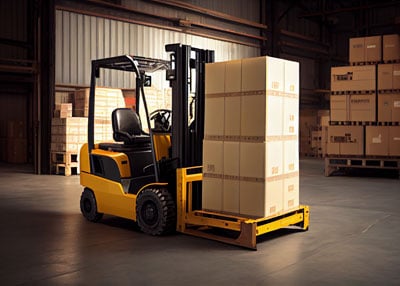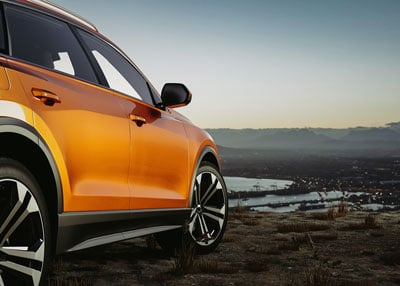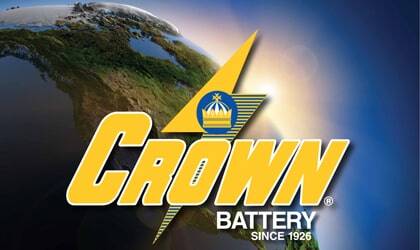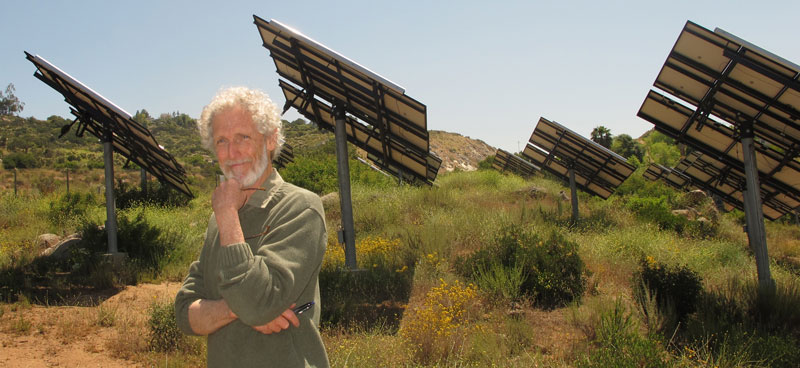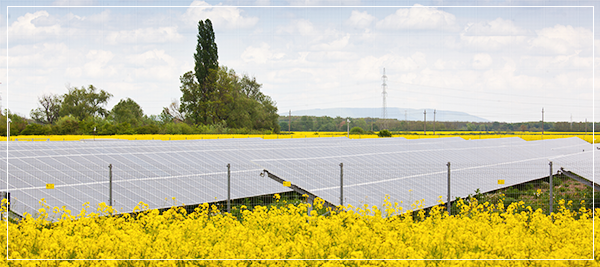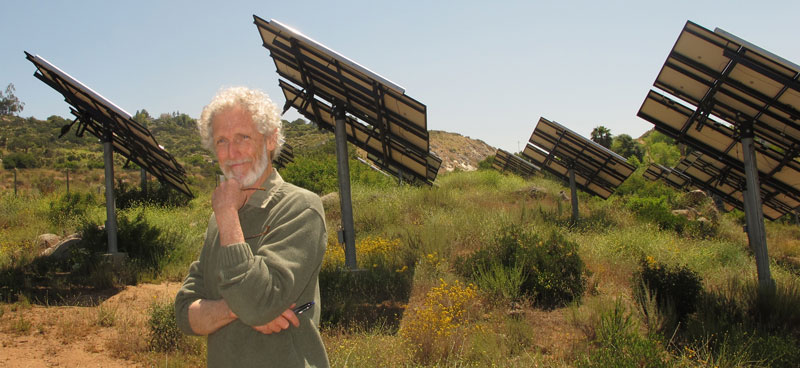Mark Snyder has been on “The Daily Show with Jon Stewart” and consulted with NASA and the Department of Energy.
A Master Electrician, he owns Mark Snyder Electric and is an independent system designer and installer with more than 30,000 renewable energy installations – including his own off-grid ranch.
Mark has consulted for DreamWorks, the International Space Station, and NREL. And he’s also been featured on/in Home Power Magazine, North American Clean Energy, Solar Power World, and EmeraldPlanet TV.
In this interview, you’ll discover:
- What’s changed with home batteries and solar
- The 4 biggest mistakes Mark sees in home battery installations
- Which Net Metering change has everyone scrambling to adapt (and what to do next)
- What are the keys people need to know about home batteries?
- Do certain home battery features matter more than others?
- And more
Q: “What made you choose to enter the renewable energy and home battery industry?”
A: “For me, I was naturally drawn to this because I’ve lived off-grid with batteries for 44 years.
And when other people called me for help, I was already trained to do it -- I’d built more than 2,500 off-grid systems before Net Metering was even conceived of.”
Q: “What’s changed since you started?”
A: “Before Net Metering, lots of enthusiasts lived off-grid or on-grid with renewables + batteries for self-sufficiency, survival, or to enjoy nature in a remote location.
Then, Net Metering encouraged solar.
And now, California utilities have said too many people have solar, and they’re losing money. So the California state utility commission is doing away with Net Metering as we know it; instead of, say, 50 cents per kWh, it’ll be 5 cents per kWh.
Today, it’s a whole different dynamic. People have to build a bigger solar system and float across their batteries during peak -- so they need big enough battery banks to last through the night… or sized big enough to last for 3-4-day storms.”
Q: “Why do most people choose home batteries today?”
A: “Saving money, backup power, and protecting the environment are key reasons people choose home batteries today.
Home batteries can offset high electric rates, especially if people use batteries during “peak rate” times of day when grid electricity is most expensive.
And combined with renewables, home batteries can reduce or eliminate methane gas (natural gas) or other fossil fuel costs. That’s important because where I live, natural gas and electricity are at parity pricing. And some people are suffering through $2,000, even $5,000/month gas bills -- and they can’t afford it.
Backup power and self-sufficiency have always been important for home battery owners. And with grid reliability issues, many people are turning to home batteries to ensure they aren’t left in the dark, especially during extreme weather.
Of course, if you’re burning fewer fossil fuels and reducing the need for peaker plants (emergency power plants), you’re also protecting our environment.“
Q: “What are the biggest mistakes people make -- and how can they avoid them?”
A: There are four big mistakes I see repeated most often.
Mistake #1: Buying batteries or solar before improving efficiency
If your home requires a lot of energy, you’ll need a lot of solar panels or wind turbines – and lots of batteries.
Energy efficiency is becoming as important as solar because there is no solar during dark days, so you need efficiency to keep lights on. And people who substituted large solar PV systems for large, inefficient electrical and/or building systems are really paying through the nose. This is because they skipped the first step:
Make everything as efficient as possible – from air-sealing (first) and then insulating (second) your building’s envelope to upgrading heating, cooling, and other electrical equipment.
And kill your parasitic (vampire) loads -- electronics and other equipment that draw power when you aren’t using them. The average home wastes 25% of its power on parasitic loads, and larger homes waste up to 50% of their total electricity.
Mistake #2: Depending on only one source of energy
During El Niño or other unpredictable weather, you can’t depend on a single source to generate your electricity all the time.
Your home battery is your first buffer.
But especially if you’re off-grid, multiple RE sources can create a buffer. For instance, solar + wind or solar + micro-hydro ensures you’ll have consistent energy.
For people living off-grid with only one renewable energy source, a generator can serve as a secondary buffer – to keep the lights on and ensure you don’t kill your batteries. But always start by improving efficiency and diversifying your energy portfolio first.
Mistake #3: Improperly sizing batteries
When I see dead batteries, improper sizing is one of the biggest culprits.
Either there are too many batteries -- and homeowners can’t keep them charged with their solar… or there are too few batteries, and they can’t last through the night and power all loads.
You need an appropriate mix of solar and batteries – and you should oversize your solar system to be able to run your equipment and keep your batteries charged.
An installer can help you figure out the longest predictable period you’ll be out -- so you don’t lose power or have to spend a ton on expensive, polluting fossil fuels.
Make sure you size your system for 50% Depth of Discharge. [NOTE: Keep reading to see the in-depth article that covers this.]
Mistake #4: Improper storage
All batteries now have weatherization requirements – no matter what kind of batteries you have, you don’t want to put them outside.
Large wet cells (flooded lead-acid batteries/FLA) are much more temperature-tolerant, at least in mild weather. Absorbent gel mat batteries (AGMs) can’t handle heat like wet cells, so we often house them in climate-controlled rooms to keep them between 55°F (13°C) and 85°F (29°C).
Lithium-ion (LI) has more challenging requirements. They’re ideally stored in temperatures similar to AGM. But I wouldn’t store LI in a house due to the possibility of thermal runaway. You can’t freeze or overheat LI batteries – or you will kill them. By contrast, FLA + AGM are hard to kill if you have a charge on the batteries -- and store them between 45°F (7°C) to 85°F (29°C).”
Q: “What do you think are the key things people need to know about home batteries?”
A: “It’s probably easiest to list these:
- What’s the warranty? Read the Fine Print: Battery Warranty Basics.
- I recommend a monitoring system to check your loads and your batteries -- and tell you if anything’s going wrong. For instance, you could have a runaway load and you do not even know it – whether from a broken conduit or another failure point. That could short-circuit or completely deplete your battery system.
- Make sure your renewable energy and battery systems are sized right. Again, start by lowering your energy requirements. Then, know your target and how much energy your system needs to be able to produce and store. Unless you’re super efficient, it can be difficult to power your entire house… but once you make your system efficient, you’ll save money and be more comfortable.”
Q: “What makes a good battery for your home?”
A: Good home batteries:
- Are resilient
- Are safe – so you don’t have to worry about your family and home
- Can be discharged down to 50% -- and still have enough reserve capacity and be able to charge it back up with my system or generator
- Accept charge quickly
- And last a long time”
Q: “How long have you lived off-grid with home batteries?”
A: “I’ve lived off-grid with batteries for 44 years.
My last home batteries were 1200Ah, large wet-cell Crown batteries – and they lasted for 24 years. That was a very good investment. [Read Fountain of Youth: Secrets of active 24-year-old lead-acid batteries to see how Mark did it.]
Now, I’m changing to 2 strings of 24 Crown Battery 2V L16 1200 Ah AGM batteries -- while we get our battery room rebuilt for climate control and expand our solar system from 12kW to 29kW.”
Q: “How did you hear about Crown Battery -- and what did you know about them initially?”
A: “One of my local distributors connected us with Crown Battery for the Plateau Solar and Wind Project, a project of IINA Solutions, the US Department of Energy (DOE), and other groups. The project brought power and energy-efficient, sustainable housing to Navajo tribal members.
We’ve worked closely with Crown Battery ever since then.”
Q: “What results have you seen from working with Crown Battery?”
A: “Before Crown, we had a lot of trouble with other battery companies in terms of reliability and performance. We often got slow responses and supply deliveries -- and lack of service is a big problem in the battery industry.
With Crown, I spend less time on technical support -- and much less time on the initial design and consultation.
Once we get systems dialed in, we’ve had such high reliability that technical support is very minor.
And we get dependable delivery and product availability. We also get an assortment of battery sizes -- because we deal with everything from RVs and boats to communities with several thousand batteries.”
Q: “What specific features do you like most about Crown batteries?”
A: “Sustainability is key for me, and I like that Crown Battery uses 100% renewable energy for manufacturing, and their batteries are 99% recycled. Plus, I’ve toured the factory and seen how the product is made. Literally, recycled materials from end-of-life batteries come in one end of the factory and exit as new batteries at the other end. [Crown Battery note: 80% of our lead is previously recycled and fully recyclable.]
From their energy-saving manufacturing techniques to their robotic welds -- the whole design and execution of the battery is just superior.
Safety is also important. People are installing these batteries inside or near their homes, and they depend on them to power their lives.
On the technology side, I’m impressed by their factory, from robotic welding and assembly to quality control. That improves the finished product. For instance, Crown has very reliable attachment points, while we’ve had problems with other batteries’ posts lifting.
All Crown’s details in design and assembly make their batteries easy and convenient to use.”
Q: “What would you say to someone considering Crown for their home batteries?”
A: I have far fewer headaches with Crown Battery than with any other battery – and the vast majority of my service calls are to fix or replace failing batteries from other companies.
With Crown, there’s very seldom an issue – I think we’ve had only four failed batteries since we started with them. Crown’s high reliability and quick service assure me that, no matter what, they’re going to cover you – they’ll pick up the phone and help.”
We’ve created a great working and cordial relationship with Crown and their local branch. Honesty, integrity, and reliability go a long way -- not only is their product reliable, but the company is, too.”
What’s next?
Or to get help finding your next Crown home batteries, click here to connect with our team.

